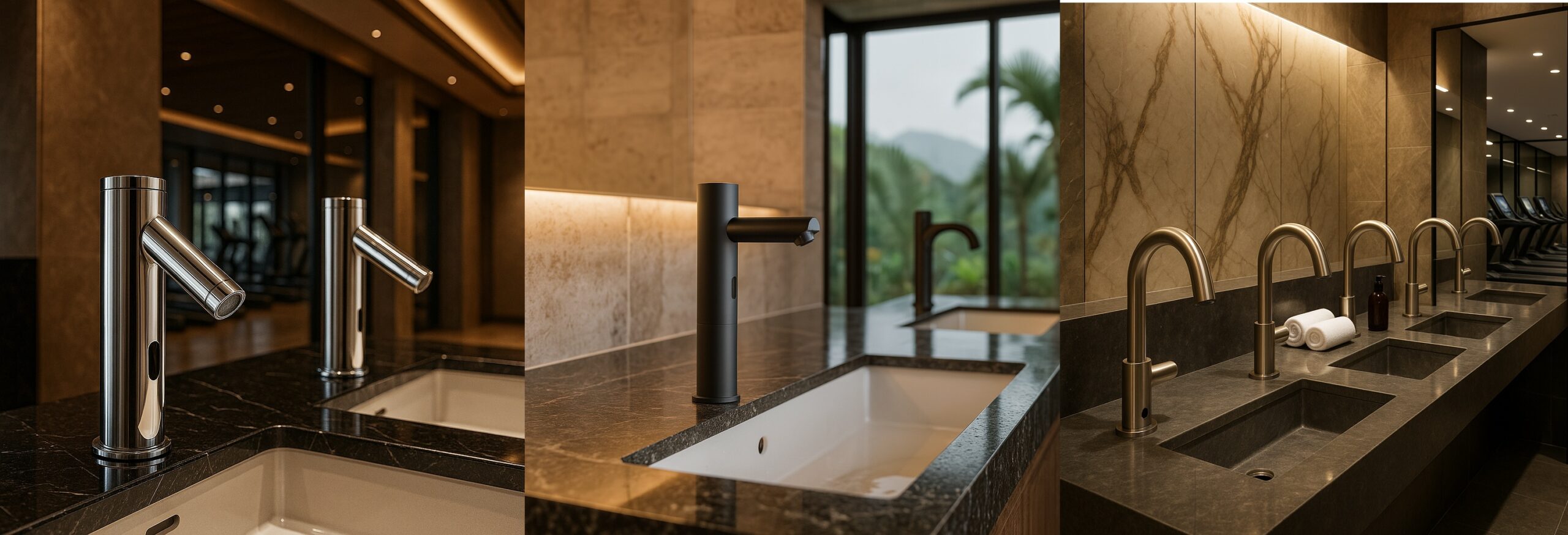Sensor Faucet Maintenance: A Bath Select Guide for Facility Managers
Provides step-by-step instructions for cleaning and troubleshooting. This 50-word primer helps facilities extend faucet life, cut downtime, and protect warranties through routine cleaning, filter checks, water-quality monitoring, and proactive part replacement. Use our compliance checklist and diagnostic flow to resolve issues faster and standardize maintenance across multi-site portfolios.

Related Topics & How-Tos
Each topic includes a 25-word summary, a primary image, and an active link.
1) Sensor Alignment & Range
Verify sensor window cleanliness, detection angle, and range. Confirm unobstructed line of sight and reflective surfaces. Adjust per manual to prevent ghost activations and intermittent triggering.
Read more2) Power: Batteries & Hard-Wiring
Test voltage under load, inspect polarity, and replace cells in matched sets. For hard-wiring, verify transformer output and secure terminations to avoid nuisance resets.
Read more3) Solenoid & Valve Service
Flush supply lines, clean strainers, and inspect O-rings. Debris often restricts flow; rebuilding kits restore performance without replacing entire assemblies, reducing cost.
Read more4) Water Quality & Filtration
Monitor hardness, TDS, and sediment load. Install pre-filters where necessary. Balanced water chemistry minimizes scaling, protects valves, and stabilizes sensor behavior.
Read more5) Cleaning Procedures
Use non-abrasive cloths and pH-neutral cleaners. Avoid aerosolized acids and bleach. Wipe sensor windows last to prevent residue streaks that degrade detection.
Read more6) Thermostatic Mixing Valves
Calibrate TMVs to safe outlet temperatures. Descale cartridges, exercise checks, and document adjustments to maintain anti-scald compliance and user comfort.
Read more7) Preventive Maintenance Scheduling
Create quarterly checks for filters, seals, sensors, and firmware. Log findings, parts used, and corrective actions to standardize performance across properties.
Read more8) BMS/IoT Telemetry
Integrate status alerts for battery, flow anomalies, and usage trends. Use telemetry to schedule targeted service and reduce unscheduled downtime.
Read more9) Aerators & Flow Control
Remove and descale aerators quarterly. Select correct GPM for application to balance conservation with handwashing effectiveness and user satisfaction.
Read more10) Supply Lines & Isolation
Confirm isolation valves function, inspect for kinks, and verify pressure. Label shutoffs for rapid service during outages or fixture swap-outs.
Read more11) Warranty-Safe Practices
Document serials, firmware, and authorized parts. Use approved cleaners. Keep service logs to preserve coverage and accelerate RMA decisions.
Read more12) Firmware & Calibration
Apply manufacturer updates, recalibrate detection thresholds, and re-test. Keep a golden configuration for rapid rollbacks across large estates.
Read more13) Accessibility & ADA/ISO
Confirm clearances, reach ranges, and actuation requirements. Maintain usability for all occupants while meeting ADA/ISO guidance on fixtures.
Read more14) Lifecycle Costing
Model battery, parts, labor, and water savings. Compare retrofit versus replace to guide capital planning and ESG targets.
Read more15) Emergency Overrides
Label bypass valves and manual actuation methods. Train staff to restore flow safely during outages without damaging components.
Read moreFocus on Compliance and Specifications
Align sensor faucet selection and maintenance with specification requirements and codes. Verify ASME A112.18.1/CSA B125.1, IPC/UPC provisions, lead-free certifications, and ADA reach/operability criteria. Maintain documentation: cut-sheets, submittals, O&M manuals, and commissioning records. Standardize models to streamline spare parts, training, and compliance audits across multi-site portfolios.
- • Submittals include model numbers, GPM, power type, finishes, and warranty terms.
- • TMV set-points documented; anti-scald verification logged quarterly.
- • Water quality reports retained with corrective actions.
- • Firmware versions tracked; change control procedures observed.
Five Priority Subtopics for Rollout
Frequently Asked Questions
Practical answers for facility managers, contractors, and project teams.
How often should we clean sensor windows and aerators?
Wipe sensor windows weekly and descale aerators quarterly, increasing frequency where hardness or sediment is high.
What’s the fastest way to diagnose “no water” calls?
Check isolation valves, power under load, then solenoid strainers. Use our PM log to see recent parts changes.
Will certain cleaners void the finish warranty?
Avoid abrasives, acids, and chlorine bleach. Use pH-neutral products per O&M. Document cleaners used to preserve coverage.
How do we prove compliance during audits?
Maintain submittals, TMV logs, firmware records, and water quality reports. Our 3.3 compliance section lists artifacts.
Spec Snapshot & Resources
0.35 / 0.5 / 1.0 GPM aerators, vandal-resistant, laminar or aerated flow.
Battery pack, hard-wired transformer, or hybrid with energy-harvesting where supported.
PVD and antimicrobial options for high-traffic healthcare and education facilities.
Sensor Alignment & Range
Detailed procedures and tolerances.
Power: Batteries & Hard-Wiring
Testing under load and transformer checks.
Solenoid & Valve Service
Strainer cleaning and rebuild kits.
Water Quality & Filtration
Hardness, TDS, and sediment control.
Cleaning Procedures
Approved agents and methods.
Thermostatic Mixing Valves
Calibration and anti-scald logs.
Preventive Maintenance Scheduling
Quarterly inspections and logging.
BMS/IoT Telemetry
Alerts and analytics.
Aerators & Flow Control
GPM selection and descaling.
Supply Lines & Isolation
Pressure and valve checks.
Warranty-Safe Practices
Logs and approved materials.
Firmware & Calibration
Updates and rollback strategy.
Accessibility & ADA/ISO
Reach ranges and usability.
Lifecycle Costing
Opex vs capex modeling.
Emergency Overrides
Bypass labeling and training.
